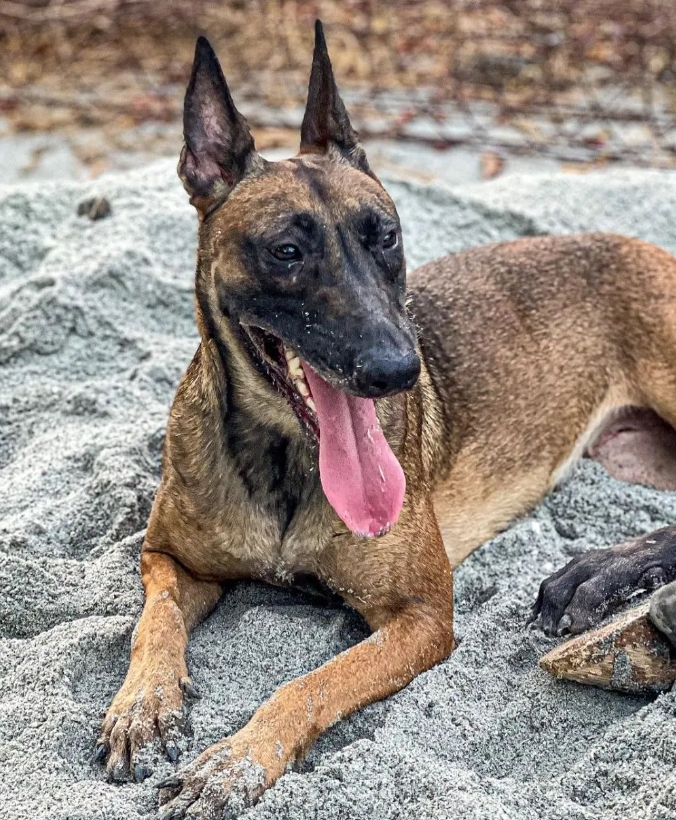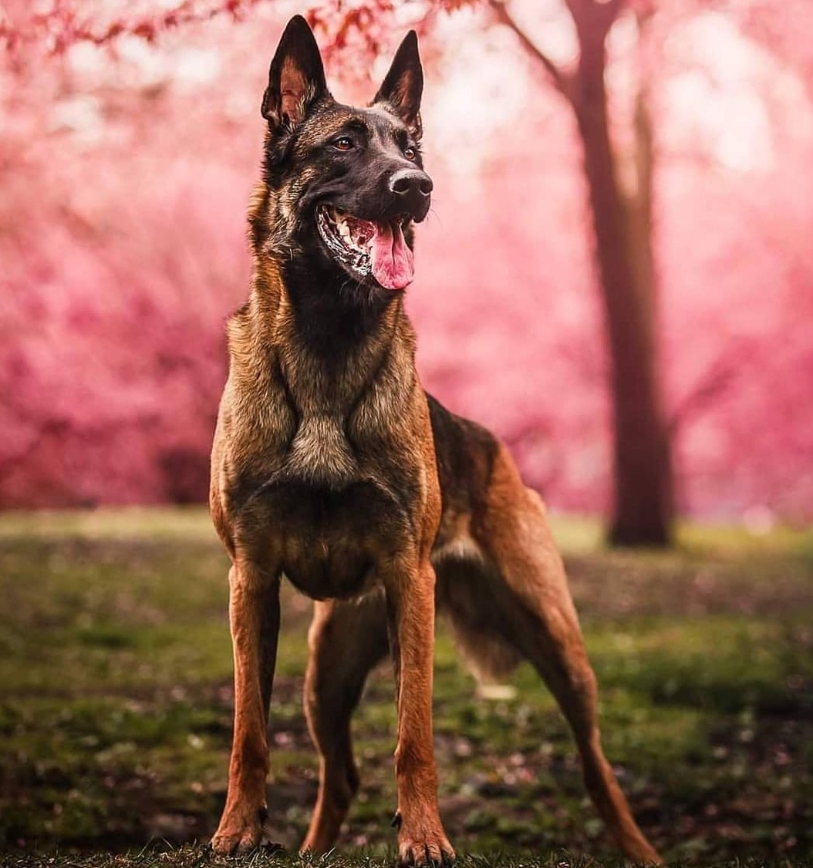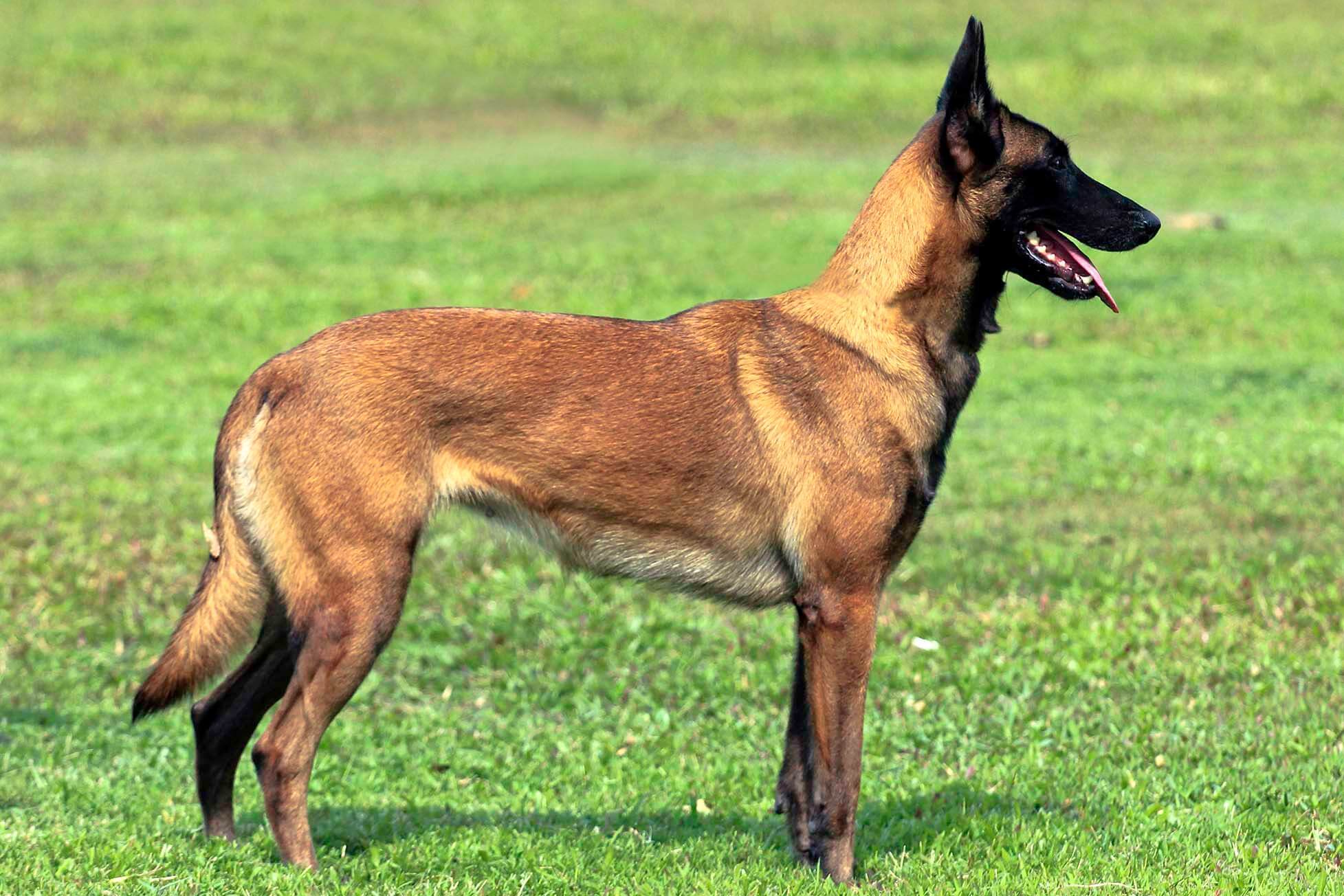Belgian Malinois
Table of Contents
I've always been captivated by Belgian Malinois, affectionately known as “Mals,” and it's no wonder they've become a beloved choice among dog enthusiasts and professionals alike. These remarkable canines are a true embodiment of intelligence, agility, and unwavering loyalty.
Their versatility is astounding, as they excel in various roles, from serving in the police and military to heroically participating in search and rescue missions. Join me on a journey as we dive deep into the world of Belgian Malinois, exploring their rich history, distinctive characteristics, the art of training them, and the care they deserve.
Whether you're considering welcoming one into your home or just curious about this extraordinary breed, this guide will unveil all you need to know about the remarkable hardworking belgian malinois.
History of the Belgian Malinois
The Belgian Malinois boasts a rich history that traces its roots back to the late 19th century, originating in the Belgian city of Malines, from which it derives its name. These dogs are part of a broader group of Belgian herding dogs that includes the Malinois, Tervuren, Laekenois, and Groenendael.
Originally, they were selectively bred for the purpose of herding and guarding livestock, a task at which they excelled thanks to their exceptional intelligence and agility.
In their early roles, the malinois belgian dog breed demonstrated their remarkable versatility, extending their utility beyond herding duties. Notably, during both World War I and World War II, these dogs played pivotal roles as messenger dogs, fearlessly traversing dangerous battlefields to deliver vital messages.
Their bravery and adaptability under such challenging conditions earned them not only respect but also worldwide recognition.
A significant milestone in the Belgian Malinois' history occurred in 1959 when the American Kennel Club (AKC) formally recognized the Belgian Malinois as a distinct and separate breed from the other Belgian herding dogs. This recognition marked a turning point, opening up new avenues for the breed's development and specialization.
Over time, belgian malinois overview have been selectively bred and trained for various roles, ranging from law enforcement and military service to search and rescue operations, showcasing their exceptional skills and unwavering dedication in these vital roles.

Belgian Malinois Physical Characteristics
Size and Build
The Belgian Malinois is a medium-sized breed characterized by its well-proportioned, athletic build. These dogs typically stand between 22 to 26 inches in height at the shoulder and weigh approximately 40 to 80 pounds. Their bodies are both robust and agile, making them exceptionally well-suited for physically demanding tasks and activities.
Coat and Color
The Belgian Malinois is renowned for its short, straight, and dense coat. This breed possesses a double coat, consisting of a soft and insulating undercoat, complemented by a tough and weather-resistant outer coat. In terms of coloration, Malinois exhibits a range of striking options, including fawn with a distinct black mask, rich mahogany hues, and the presence of black-tipped hairs. Some individuals may also display a small white patch on their chest or toes, adding to the breed's visual variety.
Distinctive Features
Belgian Malinois possess several distinctive features that set them apart from other breeds. Their alert and attentive expression is one such characteristic, reflecting their inherent intelligence and watchful nature. They are further distinguished by their erect, triangular ears, which contribute to their poised appearance.
Temperament and Behavior of Belgian Malinois
Intelligence
Belgian Malinois are renowned for their intelligence. They are quick learners and excel in tasks that require problem-solving and critical thinking. This intelligence makes them highly trainable, but it also means they need mental stimulation to stay happy and engaged.
Loyalty and Bonding
Malinois are incredibly loyal and form strong bonds with their owners. They thrive on human interaction and are often referred to as “velcro dogs” because they like to be close to their people. This loyalty makes them excellent companions and protectors.
Socialization
Early socialization is crucial for Belgian Malinois puppies. They are naturally protective, and proper socialization helps them differentiate between friend and foe. Exposing them to various people, animals, and environments at a young age can help prevent aggression or fearfulness later in life.
Energy and Activity Level
Belgian Malinois are renowned for their high energy levels and boundless enthusiasm. They thrive on physical activity and excel in various canine sports such as agility, obedience, and tracking. It's essential for their well-being that they receive regular exercise and mental stimulation. Owners should be prepared for active playtime and exercise routines to keep them both physically and mentally fit.
Protectiveness
Belgian Malinois are inherently protective of their families and territory. Their loyalty extends to a strong protective instinct, making them excellent watchdogs and guardians. They are quick to alert their owners to potential threats and are willing to defend their loved ones if necessary. Early training and socialization can help channel this protectiveness in a balanced and controlled manner.
Independence
While highly loyal and affectionate, Belgian Malinois also possess a degree of independence. They are not overly needy and can entertain themselves to a certain extent. This independence can be an asset for owners who may have to be away for periods during the day, provided the dog is adequately exercised and mentally stimulated.
Agility and Versatility
Due to their intelligence and agility, Belgian Malinois excel in a wide range of roles and activities. Beyond being excellent family pets, they are frequently employed in various professional capacities, including search and rescue, police work, and military service. Their versatility and adaptability make them a top choice for demanding tasks that require a combination of physical prowess and mental acumen.
Obedience and Training
Belgian Malinois respond well to structured training. Their intelligence and eagerness to please make them highly trainable dogs. However, they can be strong-willed and require a firm but fair handler. Positive reinforcement techniques, consistency, and early training are key to harnessing their potential fully.

Belgian Malinois Training and Exercise
Mental Stimulation
Belgian Malinois, with their exceptional intelligence, crave mental stimulation to stay engaged and content. It's vital to provide them with activities that challenge their intellect. Incorporating puzzle toys, interactive games, and even advanced obedience training sessions can help keep their minds sharp and prevent boredom. These activities not only stave off destructive behavior but also promote their mental well-being.
Obedience Training
Obedience training is not just a recommendation but a fundamental requirement for Belgian Malinois. These dogs are known for their responsiveness to positive reinforcement methods, making them highly trainable. They thrive when they have clear boundaries and expectations set for them.
Exercise Requirements
Belgian Malinois are an incredibly active breed, and their exercise needs are substantial. Daily physical activity is not just a preference; it's a necessity to keep them healthy and content. This can include brisk walks, runs, or supervised playtime in a secure yard. However, these activities alone may not suffice for this energetic breed.
Socialization
Proper socialization is paramount for Belgian Malinois. Early exposure to various people, animals, and environments is essential to help them develop well-rounded social skills. It helps them distinguish between friend and foe, reducing the risk of fearfulness or aggression in unfamiliar situations. Well-socialized Malinois are more likely to adapt comfortably to different social settings and interactions.
Consistency and Positive Reinforcement
Consistency is key when training Belgian Malinois. These dogs thrive on routine and respond best to clear and consistent commands. Positive reinforcement, such as praise and treats, is a highly effective training method. They are eager to please, so rewarding desired behavior encourages them to repeat it. However, harsh training methods or physical punishment can be counterproductive, leading to fear or aggression.
Channeling Energy
Belgian Malinois have an abundance of energy, and it's important to channel it constructively. In addition to daily exercise, providing them with tasks that align with their natural instincts can be highly rewarding for both the dog and owner. Activities such as agility, herding trials, and even obedience competitions can help focus their energy and provide a sense of purpose.
Job or Task-Oriented Training
Malinois excel when they have a job to do. They have a long history of working alongside humans in various roles, including search and rescue, police work, and as service dogs. Owners who engage them in task-oriented training, even if it's in the form of advanced obedience or agility, can tap into their drive and dedication.

Health and Care of Belgian Malinois
Common Health Issues
While Belgian Malinois are generally a robust and healthy breed, they are not immune to certain health concerns. It's important for owners to be aware of these potential issues and take proactive steps to ensure their pet's well-being. Some common health problems that can affect Belgian Malinois include:
- Hip Dysplasia: This is a genetic condition where the hip joint doesn't develop correctly, potentially leading to arthritis and pain. Regular veterinary check-ups can help monitor and manage this condition.
- Elbow Dysplasia: Similar to hip dysplasia, elbow dysplasia is a developmental issue that affects the elbow joint. Proper nutrition and controlled exercise can help mitigate its effects.
- Progressive Retinal Atrophy (PRA): PRA is an inherited eye disorder that can lead to gradual vision loss. Regular eye exams can help diagnose and manage this condition.
- Bloat: Also known as gastric torsion or twisted stomach, bloat is a life-threatening emergency where the stomach fills with gas and twists on itself. Immediate veterinary intervention is crucial to save the dog's life.
Regular veterinary check-ups, including screenings for hereditary conditions, are vital to catch and address potential health issues early. A nutritious diet, exercise, and preventive measures can help maintain their overall health.
Grooming Needs
Belgian Malinois have a short coat that requires relatively low maintenance. Nevertheless, regular grooming practices contribute to their comfort and hygiene:
- Brushing: Frequent brushing helps remove loose hair and keeps their coat in good condition. This is particularly important during shedding seasons.
- Baths: Occasional baths are usually sufficient to keep their coat clean and fresh.
- Nail Trimming: Regular nail trimming prevents overgrowth and discomfort.
- Ear Cleaning: Cleaning the ears helps prevent infections, especially in dogs with floppy ears.
- Dental Care: Dental hygiene, such as brushing their teeth or providing dental chews, can help maintain oral health.
Nutritional Requirements
Proper nutrition is a cornerstone of Belgian Malinois care. To ensure their health and well-being, consider the following:
- Balanced Diet: Provide a balanced diet tailored to their age, activity level, and size. Consult with your veterinarian to determine the most suitable diet for your specific dog.
- High-Quality Dog Food: Invest in high-quality dog food with appropriate protein and fat levels to support their energy requirements.
- Portion Control: Avoid overfeeding, as maintaining a healthy weight is essential for their overall health.
Belgian Malinois as Family Pets
Family Compatibility
While Belgian Malinois are often renowned for their working roles, they can also become loving and dedicated family pets when placed in the right environment. However, prospective owners must be well-prepared for the breed's high energy levels and exercise requirements.
Families with active lifestyles who are committed to meeting these needs may find the Malinois to be an excellent addition to their household.
Training for Home Life
To ensure that Belgian Malinois thrive as well-behaved family members, it is imperative to provide them with proper training and socialization. These dogs can coexist harmoniously with children and other pets, but early exposure and consistent training are paramount.
Establishing clear boundaries, positive reinforcement, and consistent commands are essential for fostering a well-adjusted and respectful pet within the home environment.
Socialization with Other Pets
Belgian Malinois can indeed live peacefully alongside other pets, including cats and dogs, with the right introduction and training. However, it is vital to exercise caution and supervision during initial interactions to ensure a positive start. Positive reinforcement techniques can help reinforce desirable behaviors and promote friendly relationships among the various pets in the household.
Finding a Belgian Malinois
If you're considering welcoming a Belgian Malinois into your life, it's crucial to make an informed choice. These energetic and intelligent dogs require responsible breeding and careful consideration. Here are some comprehensive steps to guide you in finding the ideal Belgian Malinois companion:
Reputable Breeders
To start your journey, seek out breeders who prioritize the health and well-being of their dogs. Reputable breeders go to great lengths to ensure the genetic health of their Malinois lines. They conduct health screenings, including tests for conditions like hip dysplasia and hereditary diseases. These breeders also provide a clean and loving environment for their puppies, setting the foundation for a well-adjusted dog.
Socialization and Training
Investigate how breeders socialize their Malinois puppies. Proper socialization at a young age is crucial for these dogs, as it helps them grow into well-adjusted and confident adults. Reputable breeders expose their puppies to various stimuli, environments, and people to ensure they develop into stable companions.
Adoption Options
Another commendable path is adopting a Malinois from a rescue organization or shelter. Numerous Malinois in need of loving homes can be found through dedicated rescue groups. By adopting, you not only provide a home for a deserving dog but also contribute to reducing the overpopulation problem in shelters. These dogs often come with a history, which can be beneficial in understanding their needs and behaviors.
Puppy Selection Tips
Whether you choose to go through a breeder or rescue organization, selecting the right puppy is crucial. Here are some tips:
- Observe the puppy's behavior and interactions with littermates and humans. Look for signs of curiosity, confidence, and sociability.
- Ensure the puppy appears healthy, with bright eyes, a shiny coat, and appropriate weight for their age.
- Inquire about the puppy's upbringing. Has it been raised in a clean and nurturing environment with plenty of socialization opportunities?
- Don't hesitate to ask for references and recommendations from the breeder or rescue organization. Speaking with previous clients can provide valuable insights into their experiences.
FAQs About Belgian Malinois
Q1: Is the Belgian Malinois a good family dog?
A1: Belgian Malinois can be good family dogs for the right households. They are loyal, intelligent, and protective. However, they are high-energy and require active families who can provide ample exercise and mental stimulation. They may not be suitable for families with very young children due to their strong herding instincts, but with proper training and socialization, they can make great companions.
Q2: Why are Belgian Malinois so expensive?
A2: Belgian Malinois are often expensive due to several factors. Firstly, they are a relatively rare breed with a limited number of reputable breeders. Additionally, their demand has increased due to their use in police and military roles, which drives up prices. They also require careful breeding to maintain their health and temperament, leading to higher breeding costs. The expenses associated with proper training and socialization also contribute to their price tag.
Q3: What is so special about Belgian Malinois?
A3: Belgian Malinois are special for several reasons:
- They are highly intelligent and versatile, excelling in various roles such as police work, search and rescue, and agility competitions.
- Their strong work ethic and loyalty make them dedicated and dependable companions.
- They have a striking appearance with a short, fawn-colored coat and a sleek, muscular build.
- Their agility and athleticism allow them to excel in various dog sports and activities.
Q4: Do Belgian Malinois turn on their owners?
A4: Belgian Malinois, like any breed, can exhibit aggression or behavioral issues if not properly trained, socialized, or cared for. However, they are not inherently predisposed to turn on their owners. Proper training, socialization, and responsible ownership are essential to prevent any breed from developing aggressive tendencies. It's important to seek professional guidance if you encounter behavior issues to address them effectively.
Conclusion
My personal journey into the world of Belgian Malinois has left me utterly captivated by their remarkable qualities. These dogs, with their rich history and distinctive characteristics, have not only showcased their unwavering loyalty and intelligence but have also touched my heart.
Exploring their history, physical traits, and temperament has deepened my appreciation for their versatility, from brave messenger dogs in wartime to beloved family companions.
As I delved into their training needs and care requirements, I realized that while Belgian Malinois demand dedication and effort, the rewards of their companionship are immeasurable. Their boundless energy and protective instincts make them not just pets but cherished members of the family.
Whether working alongside humans in critical roles or sharing their lives with us, Belgian Malinois serve as a powerful reminder of the incredible connections that can exist between humans and their canine counterparts.
Sources
https://vgl.sf.ucdavis.edu/test/behavior-propensity-belgian-malinois
https://www.ncbi.nlm.nih.gov/pmc/articles/PMC3680094/








